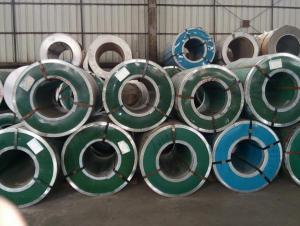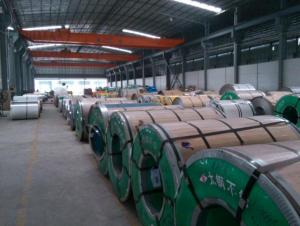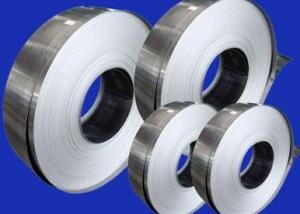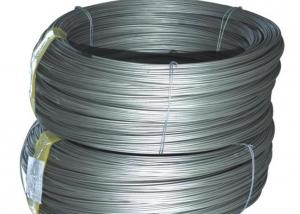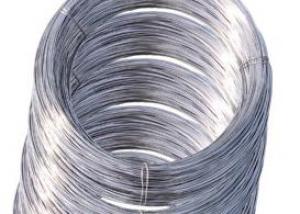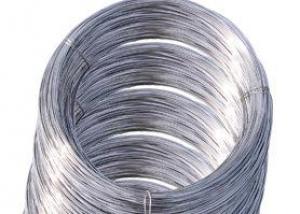Best Quality for Stainless Steel Coil
- Loading Port:
- China Main Port
- Payment Terms:
- TT or LC
- Min Order Qty:
- 1 Ton m.t.
- Supply Capability:
- 30000ton per month m.t./month
OKorder Service Pledge
OKorder Financial Service
You Might Also Like
AISI 304 Stainless Steel Coil
1. Chemical Composition
C | Si | Mn | P | S | Ni | Cr |
max0.08 | max1.00 | max2.00 | max0.045 | max0.03 | 8.00-10.50 | 18.00-20.00 |
2. Mechanical Properties
Yield Strength | Tensile | Elongation | Hardness (HV) | Hardness (HRB) |
≥ 205 | ≥ 520 | ≥ 40 | ≤ 200 | ≤ 90 |
3. Standard: AISI, ASTM, GB, EN, DIN, JIS
4. Surface: 2B, NO.1, BA, NO.4, Hairline, SB, Mirror finish, Anti-skid, Cherkered etc.
5. Size:
Thickness: 0.3-3mm (cold rolled), 3-40mm (hot rolled)
Width: 1000mm or 1219mm or 1240mm for cold rolled, 1500mm for hot rolled.
Length: As customers' request.
6. MOQ: 1 Ton
7. Payment terms: T/T or L/C
8. Packing: Seaworthy package with wooden or Iron pallets with the paper and the steel strip, or as customers' request.
9. Delivery time: Usually about 7 days after we confirming the order, or according to your quantity.
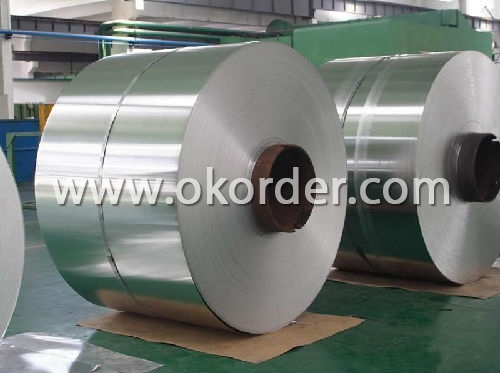

- Q:202 stainless steel wire can pass 200 hours salt mist test?
- Application of stainless steel passivation liquid: to improve the rust resistance of stainless steel, to enhance the salt spray test ability of stainless steel, and to enhance the added value of products.Adaptation materials: applicable to all 200 and 300 series stainless steels (201, 202, 204, 301, 302, 304, 305, 309, 310, 303, 316, 317,, 321, 347, XM7, and...) Dry rust prevention.
- Q:Which is good, brushed stainless steel or plain stainless steel?.
- Stainless steel wire drawing is a kind of metal processing technology. It is the most popular surface treatment technology in the stainless steel and aluminum products industry. It is the drawing effect of the stainless steel and aluminum products.
- Q:What are the common uses of stainless steel wire in the oil and gas industry?
- Stainless steel wire is commonly used in the oil and gas industry for various applications such as wireline operations, downhole tools, and control lines. It is used for its high strength, corrosion resistance, and ability to withstand harsh environments. Stainless steel wire is employed in wireline operations for tasks like measuring wellbore parameters, setting and retrieving tools, and conducting well interventions. Additionally, it is utilized in downhole tools such as fishing tools, packers, and plugs due to its durability and resistance to corrosive substances. Control lines made of stainless steel wire are used to transmit signals and fluids in well control systems, ensuring efficient and reliable operations in the oil and gas industry.
- Q:How does the diameter of stainless steel wire affect its strength?
- The diameter of stainless steel wire has a direct impact on its strength. Generally, as the diameter of the wire increases, its strength also increases. This is due to the increased cross-sectional area of the wire, which allows for a greater distribution of load and resistance to deformation or breaking. When the diameter of the stainless steel wire is larger, it can withstand higher levels of tension or compression without experiencing failure. This makes it suitable for applications that require greater strength, such as in construction, engineering, or manufacturing industries. On the other hand, if the diameter of the stainless steel wire is smaller, its strength decreases. Thinner wires have a smaller cross-sectional area, which means they have less material to distribute the load and are more prone to deformation or breaking under stress. However, thinner wires may be preferred for applications that require flexibility or where a lower tensile strength is sufficient. It is important to note that the specific grade or alloy of stainless steel wire also affects its strength. Different alloys have varying mechanical properties, including strength, so it is crucial to consider the specific requirements of the application when selecting the appropriate wire diameter and material.
- Q:201 stainless steel hydrogen withdrawal what are the uses?
- Stainless steel microfilament has good conductivity, thermal conductivity, high strength, high elasticity, wear resistance, corrosion resistance, good shielding, anti-static, radiation protection, long life and so on. Widely used in stainless steel wire mesh weaving, stainless steel wire drawing, stainless steel wire rope, stainless steel hose, stainless steel wire bundle industries such as petrochemical, aerospace, textile printing, electronic communication, environmental protection, medical care, daily life. Such as high precision, high mesh screen radiation anti-static composite material, automobile airbag, optical fiber and cable shielding net, electronic display device, the rate of radiation shielding clothes, anti-static overalls, bulletproof clothing, anti-counterfeiting materials, high conductive shielding net etc..
- Q:What are the different tensile strengths available for stainless steel wire?
- The tensile strengths available for stainless steel wire vary depending on the specific grade and thickness of the wire. Some common tensile strengths for stainless steel wire range from 70,000 to 300,000 pounds per square inch (psi).
- Q:What are the different types of stainless steel wire mesh weaves available?
- There exists a variety of stainless steel wire mesh weaves to choose from, each presenting its own distinct pattern and characteristics. Among the commonly utilized weaves are: 1. Plain weave: This weave stands as the most basic and widespread type, where wires interlace in a straightforward crisscross pattern. It yields a sturdy and long-lasting mesh with evenly-sized openings in both directions. 2. Twill weave: By weaving wires in a diagonal manner, this weave produces a noticeable diagonal line effect. Twill weave offers enhanced strength and stability compared to plain weave, making it suitable for heavy-duty applications. 3. Dutch weave: Incorporating a combination of thick and thin wires, Dutch weave results in a tightly-knit mesh with smaller openings. This weave finds common usage in situations requiring fine filtration due to its exceptional particle retention capabilities. 4. Twilled Dutch weave: Combining the characteristics of twill weave and Dutch weave, this weave features a double layer of warp wires, generating a robust mesh with smaller openings in both directions. 5. Reverse Dutch weave: In this weave, the warp wires are thicker than the weft wires. As a result, the mesh possesses larger openings in the weft direction, making it optimal for applications that necessitate high flow rates and mechanical strength. 6. Five-heddle weave: Differing from the conventional two-heddle method, this unique weave employs five heddles. It creates a smooth and flat mesh surface, making it suitable for applications where a uniform appearance is desirable. Each type of stainless steel wire mesh weave possesses its own unique advantages and is selected based on specific application requirements, such as filtration needs, strength, flow rate, and aesthetic preferences.
- Q:How does stainless steel wire perform in saltwater environments?
- Stainless steel wire is highly resistant to corrosion, making it an excellent choice for use in saltwater environments. The chromium content in stainless steel forms a protective oxide layer on the surface, which prevents the metal from reacting with the saltwater and other corrosive elements. This oxide layer acts as a barrier, providing long-term protection against rust and corrosion. Due to its corrosion resistance, stainless steel wire can withstand prolonged exposure to saltwater without deteriorating or losing its strength. This makes it ideal for various applications such as marine equipment, fishing gear, boat rigging, and coastal structures. Additionally, stainless steel wire is also resistant to pitting and crevice corrosion, which are common problems in saltwater environments. These types of corrosion can occur in areas where oxygen levels are low or where debris accumulates, but stainless steel's protective oxide layer prevents such localized corrosion from taking place. Furthermore, stainless steel wire offers good mechanical properties such as high tensile strength and durability, ensuring its performance even in harsh saltwater conditions. It can withstand the stresses and strains associated with marine environments, including strong waves, saltwater spray, and fluctuating temperature and humidity levels. In summary, stainless steel wire is highly reliable and performs exceptionally well in saltwater environments. Its corrosion resistance, along with its mechanical properties, make it a popular choice for a wide range of applications where durability and longevity are crucial.
- Q:How are stainless steel wire springs used in suspension systems?
- Stainless steel wire springs are commonly used in suspension systems to absorb shocks and vibrations, providing a smoother and more comfortable ride. They help support the weight of the vehicle and maintain the desired ride height, while also allowing for flexibility and movement as the suspension system reacts to road conditions. Additionally, stainless steel's corrosion resistance ensures durability and longevity in various weather and environmental conditions.
- Q:Is stainless steel wire suitable for wire rope connectors?
- Yes, stainless steel wire is suitable for wire rope connectors. Stainless steel is known for its high strength, durability, and resistance to corrosion, making it an excellent choice for wire rope connectors that require reliability and longevity in various applications.
1. Manufacturer Overview |
|
|---|---|
| Location | Zhejiang,China |
| Year Established | 2000 |
| Annual Output Value | Above US$8.3 Million |
| Main Markets | Europe, America |
| Company Certifications | ISO9001:2000 |
2. Manufacturer Certificates |
|
|---|---|
| a) Certification Name | |
| Range | |
| Reference | |
| Validity Period | |
3. Manufacturer Capability |
|
|---|---|
| a)Trade Capacity | |
| Nearest Port | Shanghai |
| Export Percentage | 30% |
| No.of Employees in Trade Department | 30 People |
| Language Spoken: | English;Chinese |
| b)Factory Information | |
| Factory Size: | Above 80,000 square meters |
| No. of Production Lines | Above 7 |
| Contract Manufacturing | OEM Service Offered;Design Service Offered |
| Product Price Range | Average |
Send your message to us
Best Quality for Stainless Steel Coil
- Loading Port:
- China Main Port
- Payment Terms:
- TT or LC
- Min Order Qty:
- 1 Ton m.t.
- Supply Capability:
- 30000ton per month m.t./month
OKorder Service Pledge
OKorder Financial Service
Similar products
New products
Hot products
Related keywords

